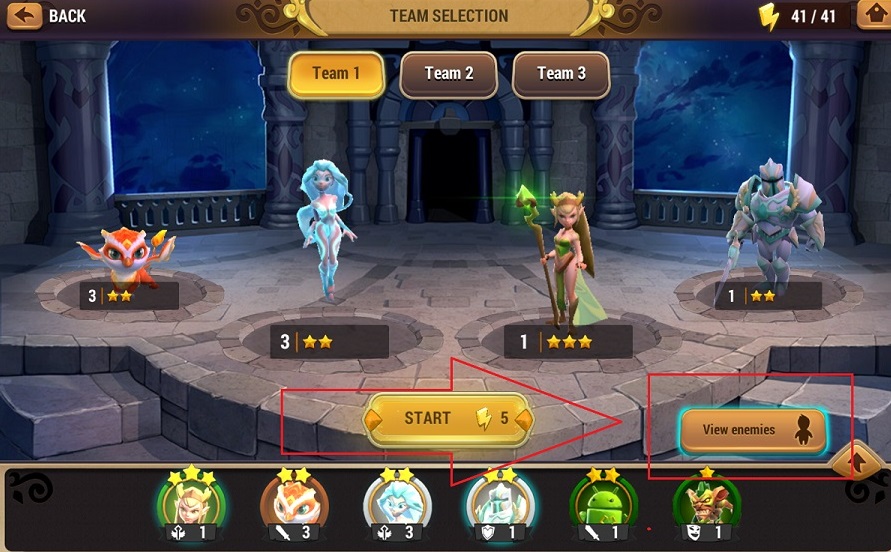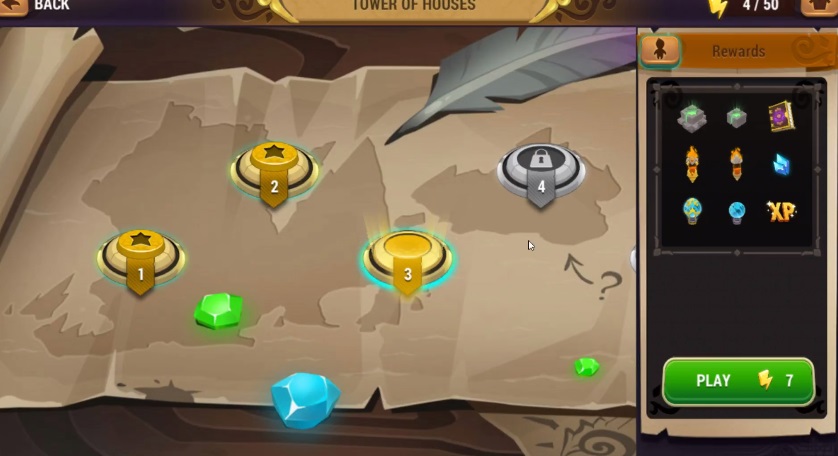From turn-based strategy to first-person RPG and even onto collectible card game, the Might & Magic franchise has been through just about ever genre out there. With Might & Magic: Elemental Guardians, the series now makes the inevitable jump to freemium mobile brawler as well.
If you’ve ever played Summoners War or Iron Maiden: Legacy of the Beast, then you already know the ins and outs of how this game will work. The exact same ideas are all present here, just with Might & Magic creature names tacked on.
There’s all the same tropes you are already used to juggling — summoning randomized units from crystals, upgrading with groups of runes, leveling/evolving creatures, and so on. For the most part, if you’ve got experience with any kind of creature-summoning mobile RPG, then you can jump right in and do fine.
There are a few key differences that can be used to get an edge up, however, and that’s what we’re going to focus on here with these Might & Magic: Elemental Guardians tips.
Might & Magic: Elemental Guardians Battle Strategy
Landing random high-star creatures, of course, is the best way to get ahead, but focusing on opposing elements will keep you going when your stable of creatures is tiny and filled only with 1- and 2-star weaklings.
You can actually see the specific makeup of each wave of enemies ahead of time when choosing a mission, meaning you should plan your unit groups based on what enemies you face. On the Team Selection screen, always make sure to tap that View Enemies button in the lower-right corner!
Once you build up a large stable of creatures by grinding a few missions, it becomes incredibly easy to put together a group composed of opposing elements to annihilate each wave.
 Viewing enemy types before a battle
Viewing enemy types before a battle
During a mission, units don’t heal between waves, so having a creature that can directly heal, apply a regeneration effect, or remove negative status effects in every team is critical if you can’t take down a wave in one or two turns.
While choosing your team lineup, poisoning attacks are incredibly useful in nearly all missions or PvE situations, so work on leveling those types of creatures, when you get them. If you manage to nab a creature who can poison multiple creatures at once, that should be your go-to monster at the start.
As you level up, synergy should be key. Putting together creatures who can reduce cooldown with creatures who can revive, regenerate, create immunity, or cause negative status effects on enemies is key. Its better to have four creatures who work well together and are lower star rating than to have four “solokings” who are individually powerful but don’t interact strongly.
Best Early Creatures
While everyone is on the hunt for killer nat 4 creatures like dragons, faceless, and angel zealots, there are several 2 star monsters that absolutely annihilate the competition and can be useful all the way to the end game.
In particular, the “basilisk bros” combo of water basilisk + air basilisk can hep you cruise through the Tower of Trials and even tackle much more powerful PvP Arena times.
The air basilisk steals 70% of an enemy’s turn bar and poisons them whenever it scores a critical hit. With some frenzy glyphs to increase his critical hit percentage chance and haste glyphs to increase speed, this effectively means he can prevent at least one creature from ever getting a turn in each wave.
That ability becomes significantly more powerful when combined with the water basilisk’s skill to freeze all enemies. When properly outfitted with haste glyphs, you can ensure the water basilisk always goes first and freezes all enemies. With the air basilisk then repeatedly stealing their turn bars, your opponent may not ever get a chance to have a turn at all!
There are plenty of teams built around those readily-available 2 star units that can complete absolutely all of the content in the entire game.
When you get into situations where an event boss wave (or the Nightmare wave 7 Ar-Kenos end boss) simply have too much health to overcome, don’t discount 2 star poisoning units like fire assassin.
She can poison, heal block, and increase the duration of negative effects (like poisoning and heal blocking). When properly protected by other healing or shielding units, she can destroy even seemingly-invincible enemies.
Elemental Guardians Arena Strategy
The PvP Arena is a whole different story, especially if you want to earn plenty of bonus summons. You get more reputation points for racking up streaks of wins, which is hard to do in the higher tiers.
When setting your Defense here, its actually better to put one weak, low-level creature to keep you in a lower tier. Then put together your best team for the attack phase of the Arena.
This seems counter-productive, but the higher tiers — even as low as Bronze 3 — are filled with highly synergized teams that can annihilate you quickly.
Until you have an absolutely killer lineup of randomized summons, its better to stay in the lower tiers so you can win more frequently and use more Arena reputation points to buy shards.
If you haven’t pulled a shaman, faceless, vampire, deva, dragon, angel zealot, or colossus, then you probably aren’t ready for the higher tiers.
When you hit the Silver tier, you start getting epic shards as you build a streak, which makes it easy to constantly summon new creatures.
No matter what your attack team consists of, in nearly all cases speed is key for your Arena team. If you go first, you have a much better chance of winning against the AI, since you can freeze / paralyze / terrify the enemy, or have your team use buffs to become immune against the opponents negative status effects.
Glyphs and Farming
As you progress and get more units and items, glyph placement can be the difference between victory and failure. Putting haste glyphs on your healers or debuffers is helpful, as is keeping accuracy glyphs on your debuffing creatures, while life stealing glyphs work wonders either on big, tanky creatures or any monster that deals area effect damage to all enemies.
Besides glyphs, you need skill books to evolve and skill up your creatures. Books start dropping at level 3 of the Elemental Tower and level 3 of the Tower of Houses on the Dragonmist Isles. They also drop more frequently in levels 5, 8, 9, and 10 of the Towers, so those are great farming locations.
Besides getting them in the towers, skill books occasionally drop when you release unwanted creatures. In most cases you should keep all your lame 1 stars to feed them to stronger monsters when raising skill ranks, but if you are desperate for a skill book you may want to release a group of nat 1s and hope to randomly get a book.
To constantly get more summons, books, chests, and energy, you want to complete achievements and build up win streaks in the Arena. By completing achievements (such as “kill X number of pixies” or “kill x number of samurai”) and playing in the Arena, you can effectively keep playing indefinitely and never run out of energy.
For a full run down on how to farm effectively, check out our complete guide to farming achievements here.
 Checking drop availability in a mission
Checking drop availability in a mission
Those are all the basic Might & Magic: Elemental Guardians strategies you need to know to get started completing missions and competing in PvP. Do you have any other good starting tips and cheats for newbies? Let us know your best strategy in the comments below!








Published: Jun 1, 2018 05:10 pm